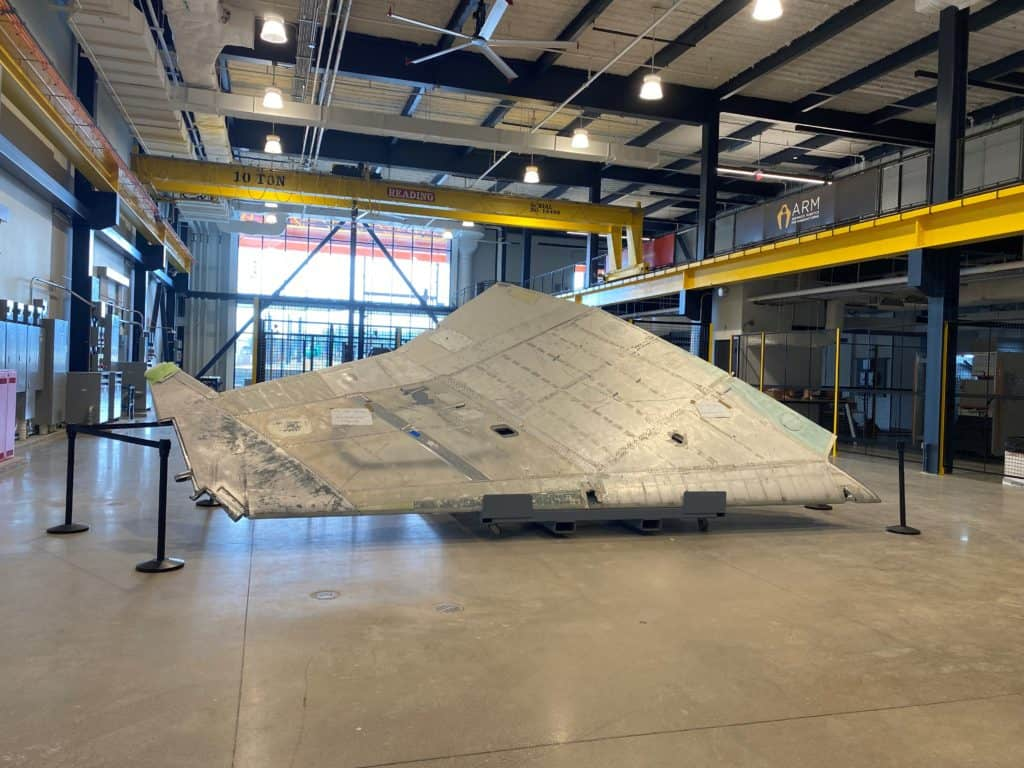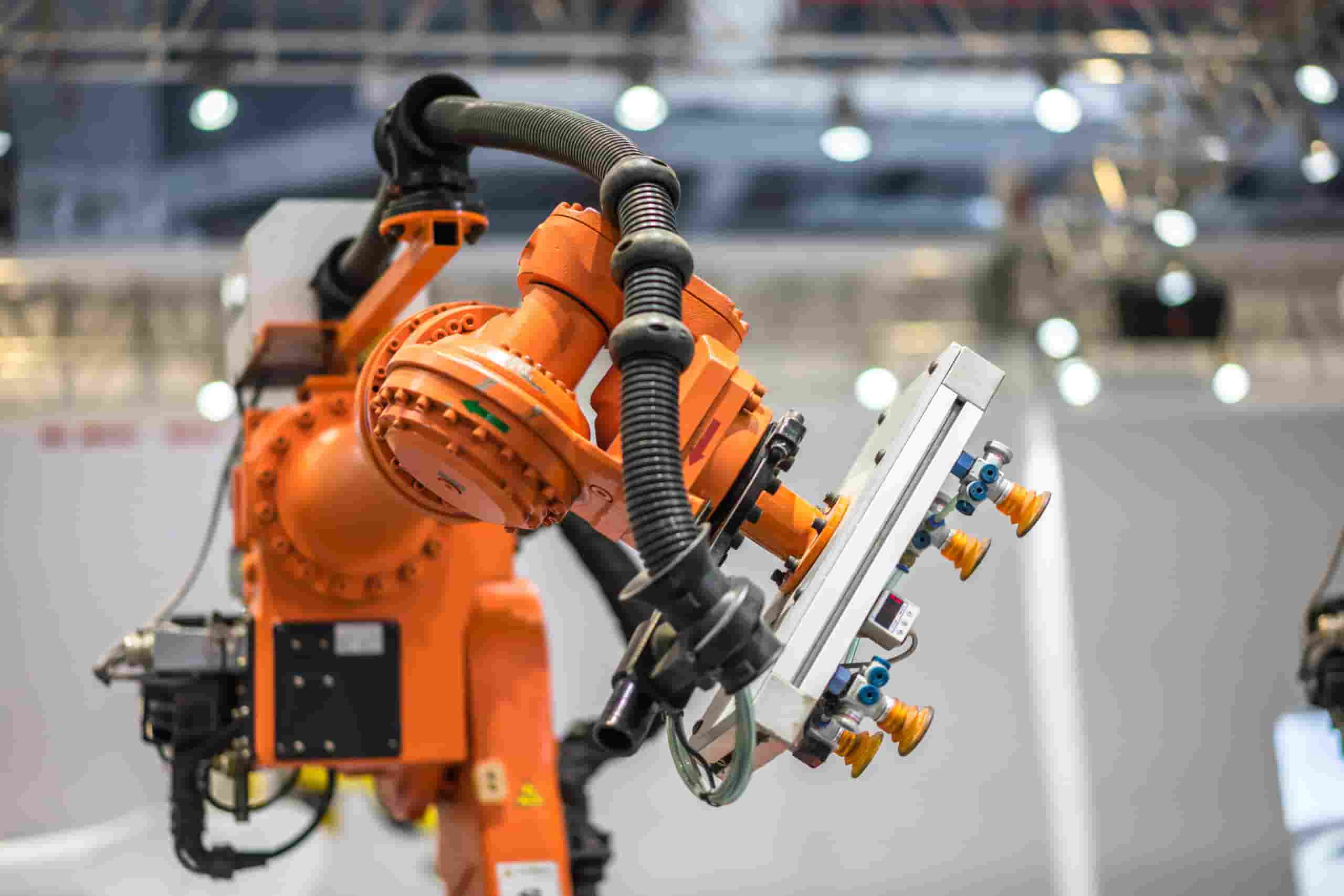Team Members
Boeing
Background & Problem Statement
As a directed ARM Institute project, this effort was jointly funded by The Air Force Research Lab (AFRL), the ARM Institute, and Boeing to address the limitations of collaborative robots for high force applications, including drilling and countersinking. Collaborative robots (cobots) available today cannot be used in these functions due to their force limitation, therefore current high-force operations are limited to manual labor or large robotic systems.
Across the DoD Enterprise and private sector, drilling today is largely completed manually by human workers, putting those operators in non-optimal ergonomic working conditions. When the process is automated, it is completed by large, inflexible industrial robotic systems. These industrial robotic systems require significant capital and time investments, extensive programming for performing single jobs, and, when the system can even be moved into the space needed, disrupt factory floor layouts.
Specifically, in sustainment environments, automation is very scarce for these tasks because the work is performed on aircraft, requiring the aircraft to be towed into a hanger where large industrial robots cannot be used because they cannot be bolted into the small space. When the industrial robot can be moved close enough to work on the aircraft, it requires constant manual reprogramming because the fasteners are not in consistent locations.
The Flexible Drilling System aims to bring the flexibility of collaborative robots to drilling. The solution created through this project also addresses general issues with high mix low volume manufacturing by being part agnostic, mobile, and highly flexible. The developments from this project can be applied to many other tasks where, until now, collaborative robots could not be used.
Technical Approach

Despite the inherent limitations of collaborative robots (size and force), they are well positioned for more complex tasks, particularly those in aerospace manufacturing. Collaborative robots are more flexible than the larger industrial robotics traditionally used for these tasks. They can more easily be taken to the task/equipment, rather than needing to bring equipment to a robot. This greater flexibility results in cost savings, safer working conditions for employees, and accelerated production time.
The Flexible Drilling System project greatly expands the capabilities of collaborative robots for high force work. The Project Team developed self-attaching end effectors, mobile platforms, automated path planning, and user-centric interfaces to address the current limitations of collaborative robots, making them ideally suited to high force drilling and countersinking operations in the aerospace industry. The advancements also enable the collaborative robot to be easily and flexibly mounted on or near equipment, including aircraft.
Impact for the Department of Defense (DoD)

The Flexible Drilling System Project Team recently held a successful project demonstration at the ARM Institute’s Mill 19 facility in Pittsburgh, PA with experts and stakeholders from across the Department of Defense (DoD). During this demonstration, the project team showcased the system’s ability to self-attach to a decommissioned F-15 wing via suction on the end effector. The team demonstrated a live, full drill cycle on the wing, including proper positioning of the drill end effector.
The outputs from the Flexible Drilling System Project provide more flexible, reconfigurable, less expensive automation options for sustainment tasks. Through the self-attaching end effectors, mobile platforms, automated path planning, and user-centric interfaces developed under this project, collaborative robots will now be capable of performing high force work in a variety of configurations with increased agility for both high and low force processes.
Get Updates
Sign up for our Mailing List
About the ARM Institute
The Advanced Robotics for Manufacturing (ARM) Institute is a Manufacturing Innovation Institute (MII) funded by the Office of the Secretary of Defense under Agreement Number W911NF-17-3-0004 and is part of the Manufacturing USA® network. The ARM Institute leverages a unique, robust, and diverse ecosystem of 300+ consortium members and partners across industry, academia, and government to make robotics, autonomy, and artificial intelligence more accessible to U.S. manufacturers large and small, train and empower the manufacturing workforce, strengthen our economy and global competitiveness, and elevate national security and resilience. Based in Pittsburgh, PA since 2017, the ARM Institute is leading the way to a future where people & robots work together to respond to our nation’s greatest challenges and to produce the world’s most desired products. For more information, visit www.arminstitute.org and follow the ARM Institute on LinkedIn and Twitter.

